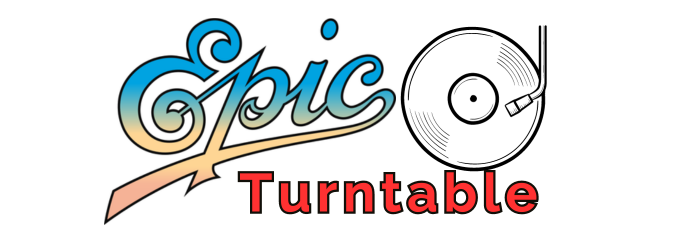Vinyl records have made a remarkable comeback in recent years, captivating both die-hard music enthusiasts and younger generations seeking a nostalgic experience. As the demand for vinyl continues to grow, it begs the question: what are the most popular genres for vinyl records? In this article, we will explore the genres that have stood the test of time and are currently in high demand among vinyl collectors. So, get ready to embark on a journey through the musical landscapes that have captured the hearts of vinyl aficionados worldwide.

Rock
Rock music is one of the foundational genres in the world of popular music. It emerged in the 1950s and has since evolved into various sub-genres that cater to different tastes and preferences. Some of the most popular sub-genres of rock include Classic Rock, Alternative Rock, Progressive Rock, Indie Rock, and Hard Rock.
Classic Rock
Classic Rock refers to the music that defined a generation. It encompasses the iconic bands and artists from the 1960s and 1970s, such as The Beatles, Led Zeppelin, The Rolling Stones, and Pink Floyd. Classic Rock is known for its catchy melodies, intricate guitar solos, and powerful vocals. It continues to captivate audiences of all ages with its timeless appeal.
Alternative Rock
Alternative Rock emerged in the 1980s as a rebellion against the mainstream rock and pop music of the time. It provided a platform for bands and artists who wanted to explore unconventional sounds and express their individuality. Bands like Nirvana, Radiohead, and Pearl Jam became synonymous with the genre. Alternative Rock is characterized by its raw energy, introspective lyrics, and non-traditional song structures.
Progressive Rock
Progressive Rock pushes the boundaries of what is considered typical rock music. It incorporates elements from classical music, jazz, and experimental genres to create intricate compositions that often span across multiple movements. Bands like Pink Floyd, Genesis, and Yes are pioneers of Progressive Rock. Their music is known for its complex arrangements, virtuosic performances, and thought-provoking lyrics.
Indie Rock
Indie Rock, short for independent rock, refers to music created by artists who are not signed to major record labels. It is a broad genre that encompasses a wide range of styles, including lo-fi, garage rock, and post-punk revival. Indie Rock bands like Arctic Monkeys, The Strokes, and Vampire Weekend gained popularity by appealing to listeners who appreciate authenticity and non-commercialized music.
Hard Rock
Hard Rock is characterized by its heavy use of electric guitars, powerful vocals, and aggressive drumming. It emerged in the late 1960s and early 1970s as a heavier and more intense extension of Classic Rock. Bands like AC/DC, Led Zeppelin, and Black Sabbath are considered pioneers of the genre. Hard Rock is known for its energetic performances, catchy riffs, and rebellious attitude.
Pop
Pop music is characterized by its catchy melodies, relatable lyrics, and widespread appeal. It has dominated the charts and captured the hearts of listeners around the world. Sub-genres of pop include Pop Rock, Synth-pop, Dance-pop, Baroque Pop, and Power Pop.
Pop Rock
Pop Rock blends elements of pop and rock music to create upbeat and radio-friendly songs. It is known for its catchy hooks, infectious rhythms, and energetic performances. Artists like Maroon 5, The Police, and Queen have mastered the art of Pop Rock, delivering hits that captivate audiences of all ages.
Synth-pop
Synth-pop, short for synthesizer pop, emerged in the 1970s and 1980s with the advent of electronic music technology. It heavily relies on synthesizers and electronic instruments to create a futuristic and often danceable sound. Bands like Depeche Mode, New Order, and Pet Shop Boys are synonymous with Synth-pop. The genre’s catchy melodies and use of electronic sounds have influenced countless artists across different genres.
Dance-pop
Dance-pop is a fusion of pop music and electronic dance music (EDM). It is characterized by its infectious beats, pulsating rhythms, and catchy hooks. Dance-pop artists like Madonna, Lady Gaga, and Britney Spears have dominated the charts and created anthems that get people on the dance floor. The genre’s energetic and uplifting nature makes it a staple at clubs and parties.
Baroque Pop
Baroque Pop fuses elements of classical music with pop sensibilities. It emerged in the 1960s and 1970s, influenced by the elaborate arrangements and ornate compositions of the Baroque era. Artists like The Beatles, The Beach Boys, and Electric Light Orchestra experimented with complex instrumentation, lush harmonies, and intricate melodies in their Baroque Pop creations.
Power Pop
Power Pop is characterized by its short and catchy songs, melodic hooks, and tight harmonies. It emerged in the 1970s as a reaction to the excesses of Progressive Rock and the heaviness of Hard Rock. Power Pop bands like Cheap Trick, The Raspberries, and Big Star prioritize melodic sensibilities and strive to create instantly memorable songs that resonate with listeners.
Hip Hop
Hip Hop is a genre that originated in the African-American communities in the 1970s. It encompasses a wide range of styles, from socially conscious storytelling to aggressive and confrontational rap. Some of the most popular sub-genres of Hip Hop include East Coast Hip Hop, West Coast Hip Hop, Trap, Old School, and Gangsta Rap.
East Coast Hip Hop
East Coast Hip Hop, also known as New York Hip Hop, emerged in the 1970s and became synonymous with the birth of the genre. Artists like Run-DMC, Public Enemy, and A Tribe Called Quest pioneered the East Coast sound. East Coast Hip Hop is characterized by its lyrical prowess, conscious storytelling, and sample-based production.
West Coast Hip Hop
West Coast Hip Hop originated in the 1980s and gained prominence with artists like N.W.A, Tupac Shakur, and Dr. Dre. It has a distinct sound characterized by its laid-back beats, G-funk influences, and storytelling that reflects the realities of life in the West Coast’s urban environments.
Trap
Trap music is a sub-genre of Hip Hop that emerged in the early 2000s. It is characterized by its booming 808 bass lines, rapid hi-hat rolls, and dark and atmospheric production. Artists like Gucci Mane, Future, and Migos have popularized the Trap sound, which often includes lyrics that focus on themes of hustling, partying, and street life.
Old School
Old School Hip Hop refers to the early years of the genre, from the 1970s to the mid-1980s. It is characterized by its simple yet effective beats, catchy samples, and the emphasis on partying and having a good time. Artists like Grandmaster Flash, LL Cool J, and Run-DMC shaped the foundations of Old School Hip Hop and paved the way for future generations.
Gangsta Rap
Gangsta Rap emerged in the late 1980s and gained popularity in the 1990s. It is characterized by its gritty and often controversial lyrics that depict the realities of gang life, violence, and social issues. Artists like N.W.A, Snoop Dogg, and The Notorious B.I.G. are associated with the Gangsta Rap movement, which pushed the boundaries of lyrical content and captured the attention of a global audience.
Electronic
Electronic music is characterized by its use of electronic instruments, synthesizers, and computer-generated sounds. It encompasses a wide range of styles and sub-genres, including House, Techno, Ambient, Trance, and Dubstep.
House
House music originated in the clubs of Chicago in the 1980s and quickly spread around the world, shaping the contemporary dance music landscape. It is characterized by its four-on-the-floor beats, repetitive yet infectious melodies, and soulful vocals. House music pioneers like Frankie Knuckles, Larry Levan, and Marshall Jefferson laid the foundation for the genre, which continues to inspire countless DJs and producers.
Techno
Techno music emerged in Detroit in the 1980s and is characterized by its repetitive beats, synthesized sounds, and futuristic aesthetics. It is often associated with underground rave culture and has a strong focus on creating a hypnotic and immersive atmosphere. Techno artists like Derrick May, Juan Atkins, and Carl Cox have played a significant role in popularizing the genre worldwide.
Ambient
Ambient music creates a tranquil and atmospheric sonic experience. It is characterized by its ethereal sounds, long and evolving compositions, and the absence of traditional song structures. Ambient music pioneers like Brian Eno, Aphex Twin, and Harold Budd have created immersive soundscapes that provide a sense of relaxation and contemplation.
Trance
Trance music is known for its uplifting melodies, energetic beats, and euphoric vibes. It emerged in the 1990s and quickly became a staple in the dance music scene. Trance artists like Armin van Buuren, Paul van Dyk, and Tiësto have created anthems that transport listeners to a state of pure ecstasy, making Trance a genre that is closely associated with the rave and festival culture.
Dubstep
Dubstep originated in the United Kingdom in the late 1990s and gained popularity in the 2000s. It is characterized by its heavy bass lines, broken beats, and explosive drops. Dubstep artists like Skrillex, Benga, and Rusko have pushed the boundaries of sound design and production techniques, creating intense and powerful tracks that have made Dubstep a force to be reckoned with in the electronic music world.

Jazz
Jazz music is known for its improvisation, syncopated rhythms, and complex harmonies. It originated in the late 19th and early 20th centuries in the United States and has since evolved into various styles and sub-genres. Some of the most popular sub-genres of Jazz include Smooth Jazz, Bebop, Fusion, Latin Jazz, and Cool Jazz.
Smooth Jazz
Smooth Jazz is a sub-genre of Jazz that emerged in the 1960s and gained popularity in the 1980s. It is characterized by its soothing and mellow sound, influenced by R&B, pop, and funk. Smooth Jazz artists like Kenny G, George Benson, and David Sanborn have created music that provides a laid-back and relaxing atmosphere, often featuring melodic saxophone solos.
Bebop
Bebop emerged in the 1940s as a reaction to the constraints of Swing music. It is characterized by its fast tempo, complex chord progressions, and virtuosic improvisation. Bebop legends like Charlie Parker, Dizzy Gillespie, and Thelonious Monk revolutionized the Jazz scene with their innovative and intricate compositions, paving the way for future generations of musicians.
Fusion
Fusion combines elements of Jazz with other genres, such as rock, funk, and R&B. It emerged in the 1960s and 1970s as a response to the changing musical landscape. Fusion artists like Miles Davis, Weather Report, and Mahavishnu Orchestra embraced electric instruments, experimental structures, and improvisation to create a dynamic and genre-defying sound.
Latin Jazz
Latin Jazz combines the rhythmic and melodic elements of Latin American music with the improvisation and instrumentation of Jazz. It emerged in the 1940s and gained popularity with artists like Dizzy Gillespie, Tito Puente, and Arturo Sandoval. Latin Jazz is characterized by its infectious rhythms, vibrant brass sections, and passionate performances that reflect the rich musical heritage of Latin America.
Cool Jazz
Cool Jazz emerged in the 1940s and 1950s as a response to the fast-paced and energetic nature of Bebop. It is characterized by its relaxed and laid-back sound, focusing on slower tempos, softer dynamics, and a more controlled approach to improvisation. Cool Jazz artists like Miles Davis, Chet Baker, and Dave Brubeck created music that exudes a sense of sophistication and elegance.
Blues
Blues music has its roots in African-American communities in the Deep South of the United States. It evolved from spirituals, work songs, and field hollers and has since become a cornerstone of American music. Some of the most popular sub-genres of Blues include Chicago Blues, Delta Blues, Electric Blues, Jump Blues, and Acoustic Blues.
Chicago Blues
Chicago Blues originated in the city’s vibrant music scene in the 1940s and 1950s. It is characterized by its electric guitar-driven sound, amplified harmonicas, and expressive vocals. Artists like Muddy Waters, Howlin’ Wolf, and Buddy Guy became synonymous with the Chicago Blues sound, which paved the way for the development of Rock and Roll.
Delta Blues
Delta Blues is considered the original form of Blues music. It emerged in the Mississippi Delta region in the early 20th century and is characterized by its raw and expressive vocals, acoustic guitar playing, and slide guitar techniques. Artists like Robert Johnson, Son House, and Charley Patton are legends of Delta Blues, whose music laid the foundation for future generations of Blues musicians.
Electric Blues
Electric Blues emerged in the 1940s and 1950s as Blues musicians started incorporating electric guitars and amplification into their performances. It marked a shift towards a more energetic and electrified sound, often accompanied by a full band. Artists like B.B. King, Albert King, and Freddie King are considered pioneers of Electric Blues, whose music influenced countless generations of guitarists.
Jump Blues
Jump Blues emerged in the 1940s as a lively and danceable sub-genre of Blues. It blended elements of Blues, Swing, and R&B, incorporating big band arrangements and horn sections. Jump Blues artists like Louis Jordan, Wynonie Harris, and Big Joe Turner created infectious and upbeat music that had a significant impact on the development of Rock and Roll.
Acoustic Blues
Acoustic Blues is characterized by its stripped-down and intimate sound. It often features a solo performer playing acoustic guitar or other traditional instruments and singing heartfelt and soulful songs. Acoustic Blues artists like Blind Lemon Jefferson, Lead Belly, and Mississippi John Hurt captured the essence of the genre, relying on their raw talent and storytelling abilities to connect with listeners.

Country
Country music has its roots in the folk music traditions of the rural United States. It is characterized by its heartfelt storytelling, twangy guitars, and distinct vocal styles. Sub-genres of Country include Traditional Country, Outlaw Country, Country Rock, Bluegrass, and Honky Tonk.
Traditional Country
Traditional Country, also known as Classic Country, refers to the early recordings and styles of Country music. It often features simple instrumentation, heartfelt lyrics, and a strong emphasis on storytelling. Artists like Johnny Cash, Hank Williams, and Patsy Cline are considered legends of Traditional Country, whose music continues to resonate with fans of the genre.
Outlaw Country
Outlaw Country emerged in the 1970s as a reaction to the polished and commercialized sound of Nashville’s mainstream Country music. It embraced a rebellious and non-conformist attitude, with artists like Willie Nelson, Waylon Jennings, and Johnny Paycheck leading the way. Outlaw Country rejected the industry norms and paved the way for a more authentic and roots-driven sound within the Country genre.
Country Rock
Country Rock emerged in the late 1960s and early 1970s as a fusion of Country music and Rock music. It blended the twangy guitars and storytelling of Country with the amplified sound and energy of Rock. Bands like The Eagles, Creedence Clearwater Revival, and Lynyrd Skynyrd found success by incorporating elements from both genres, creating a new sound that appealed to a wide audience.
Bluegrass
Bluegrass music originated in the Appalachian region of the United States and is characterized by its fast-paced and intricate instrumental work, tight harmonies, and storytelling lyrics. It often features acoustic instruments like the banjo, fiddle, mandolin, and guitar. Bluegrass legends like Bill Monroe, Lester Flatt, and Earl Scruggs popularized the genre, which is known for its infectious energy and virtuosic performances.
Honky Tonk
Honky Tonk is a style of Country music that emerged in the 1940s and 1950s. It is characterized by its lively and danceable sound, often associated with bars and clubs. Honky Tonk songs typically feature steel guitars, fiddles, and heartfelt lyrics that reflect the joys and hardships of everyday life. Artists like Hank Williams, Lefty Frizzell, and Merle Haggard shaped the Honky Tonk sound and became icons of the genre.
R&B/Soul
R&B/Soul music is known for its soulful vocals, infectious grooves, and heartfelt emotion. It emerged in African-American communities in the United States and has since become a global phenomenon. Sub-genres of R&B/Soul include Motown, Neo-Soul, Funk, Disco, and Soul.
Motown
Motown refers to the music recorded and produced by the Motown record label in Detroit, Michigan, in the 1960s and 1970s. Motown artists like Marvin Gaye, Stevie Wonder, and The Supremes achieved commercial success with their smooth and polished sound, characterized by its catchy melodies, tight harmonies, and orchestral arrangements. Motown played a significant role in breaking racial barriers and bringing R&B/Soul to a wider audience.
Neo-Soul
Neo-Soul emerged in the 1990s as a fusion of R&B/Soul, Hip Hop, and Jazz influences. It is characterized by its smooth and mellow sound, conscious and introspective lyrics, and a strong emphasis on live instrumentation. Neo-Soul artists like Erykah Badu, D’Angelo, and Lauryn Hill breathed new life into the R&B/Soul genre, infusing it with a fresh and contemporary sound.
Funk
Funk music emerged in the 1960s and 1970s as a fusion of R&B, Soul, and Jazz influences. It is characterized by its syncopated rhythms, prominent bass lines, and energetic horn sections. Funk artists like James Brown, Parliament-Funkadelic, and Sly and the Family Stone created music that was irresistibly groovy, encouraging audiences to get up and dance.
Disco
Disco music emerged in the 1970s as a reaction to the rock-dominated music scene. It is characterized by its danceable beats, lush orchestration, and catchy melodies. Disco artists like Donna Summer, Bee Gees, and Chic created anthems that became the soundtrack of the vibrant nightlife and dance culture of the era.
Soul
Soul music originated in the 1950s and is characterized by its passionate vocals, emotional delivery, and deep-rooted gospel and blues influences. Soul artists like Aretha Franklin, Otis Redding, and Al Green created music that resonated with audiences on a profound level, capturing the essence of the human experience through their powerful performances and heartfelt lyrics.
Metal
Metal music is characterized by its heavy guitars, aggressive vocals, and thunderous drumming. It emerged in the late 1960s and early 1970s and has since branched out into various sub-genres. Some of the most popular sub-genres of Metal include Heavy Metal, Thrash Metal, Death Metal, Black Metal, and Power Metal.
Heavy Metal
Heavy Metal is the foundation of the Metal genre. It is characterized by its heavy and distorted guitars, soaring vocals, and thunderous drumming. Heavy Metal bands like Black Sabbath, Iron Maiden, and Judas Priest pioneered the genre, creating music that was louder, faster, and more aggressive than anything that came before.
Thrash Metal
Thrash Metal emerged in the 1980s as a faster and more aggressive form of Heavy Metal. It is characterized by its rapid guitar riffs, high-speed drumming, and aggressive lyrics. Thrash Metal bands like Metallica, Megadeth, and Slayer took the heaviness of Heavy Metal to new heights, influencing future generations of Metal musicians with their ferocious energy and technical proficiency.
Death Metal
Death Metal is known for its extreme and intense sound. It emerged in the 1980s and is characterized by its guttural vocals, down-tuned guitars, and relentless blast beats. Death Metal bands like Cannibal Corpse, Death, and Morbid Angel pushed the boundaries of heaviness and explored themes of gore, violence, and existentialism.
Black Metal
Black Metal emerged in the 1980s and is characterized by its dark and atmospheric sound, shrieking vocals, and occult and pagan-inspired lyrics. It often features tremolo-picked guitar riffs, blast beats, and lo-fi production. Black Metal bands like Mayhem, Burzum, and Emperor developed a unique and controversial sound that pushed the boundaries of extreme music.
Power Metal
Power Metal is characterized by its melodic and symphonic sound, soaring vocals, and fantasy-themed lyrics. It emerged in the 1980s and gained popularity in Europe. Power Metal bands like Helloween, Blind Guardian, and Sonata Arctica combine high-speed guitar solos, epic choirs, and uplifting melodies to create an exhilarating and larger-than-life musical experience.
Folk
Folk music has a rich and varied history, with roots in traditional music from around the world. It is characterized by its storytelling lyrics, acoustic instrumentation, and emphasis on cultural heritage. Sub-genres of Folk include Traditional Folk, Contemporary Folk, Singer-Songwriter, Americana, and Folk Rock.
Traditional Folk
Traditional Folk music refers to the songs and tunes that have been passed down through generations, often reflecting the cultural heritage and history of a particular region or community. It is characterized by its acoustic instrumentation, heartfelt storytelling, and timeless melodies. Traditional Folk songs like “This Land Is Your Land” and “The House of the Rising Sun” have become part of the collective musical consciousness.
Contemporary Folk
Contemporary Folk music refers to the modern interpretations and creations of Folk music. It embraces the traditional elements of the genre while incorporating contemporary themes and influences. Contemporary Folk artists like Bob Dylan, Joni Mitchell, and Joan Baez have left a lasting impact, creating music that serves as a social commentary and captures the spirit of the times.
Singer-Songwriter
Singer-Songwriter music focuses on the art of the individual performer, usually accompanied by an acoustic guitar or piano. It is characterized by its introspective and personal lyrics, heartfelt vocals, and stripped-down instrumentation. Singer-Songwriters like James Taylor, Carole King, and Cat Stevens have touched the hearts of listeners with their honest and poetic storytelling.
Americana
Americana is a genre that draws influences from various American roots music styles, including Folk, Country, Blues, and Rock. It is characterized by its rustic and nostalgic sound, often reflecting rural and small-town America. Americana artists like Bob Dylan, Neil Young, and Emmylou Harris have embraced this genre to create music that explores the American experience and its cultural heritage.
Folk Rock
Folk Rock emerged in the 1960s as a fusion of Folk music and Rock music. It brought together the acoustic instruments and storytelling nature of Folk with the amplified sound and energy of Rock. Folk Rock artists like Simon & Garfunkel, Crosby, Stills & Nash, and Bob Dylan helped popularize the genre, creating music that resonated with a generation seeking social change and self-expression.
In conclusion, the world of music is incredibly diverse, offering something for everyone’s taste. Whether you’re a fan of the timeless melodies of Classic Rock, the energetic beats of Hip Hop, the soulful vocals of R&B/Soul, or the heavy riffs of Metal, there is a genre and sub-genre that will capture your attention. Exploring different genres allows you to expand your musical horizons, appreciate the creative diversity, and connect with the emotions and experiences that music has to offer. So go ahead and immerse yourself in the world of music, discover new sounds, and let the power of melody and rhythm guide your journey.

Hi there! I’m Eric Hoffman, the author behind EpicTurntable.com. I’m passionate about revolutionizing your music experience through vinyl. At EpicTurntable.com, you’ll find everything you need – from turntables and vinyl records to accessories. Whether you’re an audiophile or just starting out, I offer expert reviews, insightful articles, and the latest trends in the world of turntables. Dive into our community forums to connect with fellow vinyl lovers, or explore our online store for exclusive deals. Join me at EpicTurntable.com, where I’m dedicated to bringing you the classics and the latest hits all in one place!

